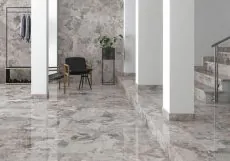Transforming Urban Living with Rooftop Glasshouse Design and Rooftop Gardens
0 Views

In an era where urban space is rapidly shrinking and the demand for sustainable living solutions continues to rise, the concepts of rooftop glasshouse design and rooftop garden development are quickly becoming the go-to solutions for forward-thinking architects, developers, and homeowners. These innovative approaches not only enhance the aesthetic and functional value of urban buildings but also contribute significantly to environmental sustainability and personal well-being.
From luxury penthouses to commercial complexes and urban residential blocks, rooftops are no longer dead spaces. With the right planning and design, they can be transformed into thriving green ecosystems that add beauty, increase property value, and promote ecological balance. Let’s explore how these trends are shaping urban architecture and why they are worth investing in.
The Rise of Rooftop Glasshouse Design
Rooftop glasshouse design is redefining how people engage with nature in densely populated areas. This concept involves creating enclosed, temperature-regulated green spaces on top of buildings, typically made with glass walls and roofing to allow ample sunlight while protecting plants from harsh weather. These structures are visually striking, environmentally beneficial, and highly functional.
Glasshouses on rooftops offer the perfect controlled environment for cultivating a wide range of plants, including herbs, vegetables, exotic flowers, and even small fruit trees. This allows city dwellers to grow their own organic produce and enjoy fresh air and natural surroundings, even amidst concrete jungles.
Designers focus heavily on optimizing insulation, ventilation, and irrigation systems to make rooftop glasshouse design energy-efficient and easy to maintain. With smart technology integrations like automated lighting, climate control, and water management, these glasshouses become not just beautiful spaces but also intelligent urban farming solutions.
Rooftop Gardens: A Green Revolution in Cities
Parallel to the trend of glasshouses, the rooftop garden is another powerful concept gaining momentum in urban areas. A rooftop garden refers to any garden located on the roof of a building. It can range from small container gardens to expansive landscaped areas featuring lawns, walking paths, fountains, and seating arrangements.
These gardens serve multiple purposes. First, they act as thermal insulators, helping regulate building temperatures and reducing the need for artificial heating and cooling. This leads to significant energy savings over time. Secondly, rooftop garden spaces absorb carbon dioxide and pollutants, purify the air, and contribute to the reduction of the urban heat island effect.
Besides the environmental benefits, rooftop garden installations also offer psychological advantages. Spending time in nature has been proven to reduce stress, boost creativity, and improve mental health. For apartment dwellers who lack private yards, rooftop gardens provide a welcome escape and a place to unwind, socialize, or engage in gardening as a hobby.
Design Considerations and Challenges
While both rooftop glasshouse design and rooftop garden projects are exciting, they do come with specific challenges. Structural assessments must be conducted to ensure that the building can support the additional weight. Waterproofing and drainage are also critical to prevent leakage and long-term damage.
It’s essential to use lightweight soil substitutes, appropriate plant selections for local climates, and high-quality materials that can withstand wind, rain, and temperature changes. Collaborating with professional designers and horticulturists ensures that the rooftop space is both beautiful and functional throughout the year.
The Role of Innovation and Green Architecture
As more cities adopt green policies and promote sustainability, architectural firms and urban planners are integrating rooftop glasshouse design and rooftop garden features into new construction projects. These features are no longer optional extras; they are becoming essential elements of modern urban design.
Companies like greenconceptors are leading the way in integrating eco-conscious thinking into urban infrastructure. By combining cutting-edge design with environmental sensitivity, they help clients create stunning rooftop spaces that deliver both beauty and purpose.
Moreover, as governments and local municipalities offer incentives for green building practices, investing in rooftop greening solutions can also offer financial benefits. Tax reductions, grants, and increased property values make these projects worthwhile from an economic perspective as well.
Case Studies and Real-World Examples
Across major cities like New York, Singapore, London, and Melbourne, rooftop garden projects are transforming cityscapes. For instance, in Singapore, many public housing buildings have lush rooftop farms that supply vegetables to nearby communities. In Europe, innovative rooftop glasshouse design models have emerged that blend residential and farming spaces seamlessly.
Backed by eco-conscious companies like greenconceptors, these trends are no longer limited to luxury developments. Even small-scale homeowners and community projects are embracing this shift to green living, proving that sustainability can be inclusive and accessible.
Conclusion: The Future is Green and Elevated
The urban lifestyle of the future is one where concrete coexists with nature — not as an afterthought but as a core design principle. With the growing popularity of rooftop glasshouse design and rooftop garden projects, cities have a unique opportunity to reimagine their skylines.
These green rooftop spaces offer numerous benefits — from energy efficiency and food security to wellness and biodiversity. Whether you’re a property developer, an architect, or an urban resident dreaming of a green oasis above the hustle and bustle, now is the perfect time to explore the untapped potential of rooftops.
As awareness grows and more professionals like greenconceptors continue to innovate in this space, we can look forward to a future where every rooftop tells a story of sustainability, resilience, and beauty — one plant at a time.
- TAGS :
Related Posts

Why should you hire a matrimonial dispute lawyer for family conflicts?
Lucas Reed / August 19, 2025
Latest News from Nigeria Today: Breaking Stories Across Every Sector
Isabella / August 16, 2025
















